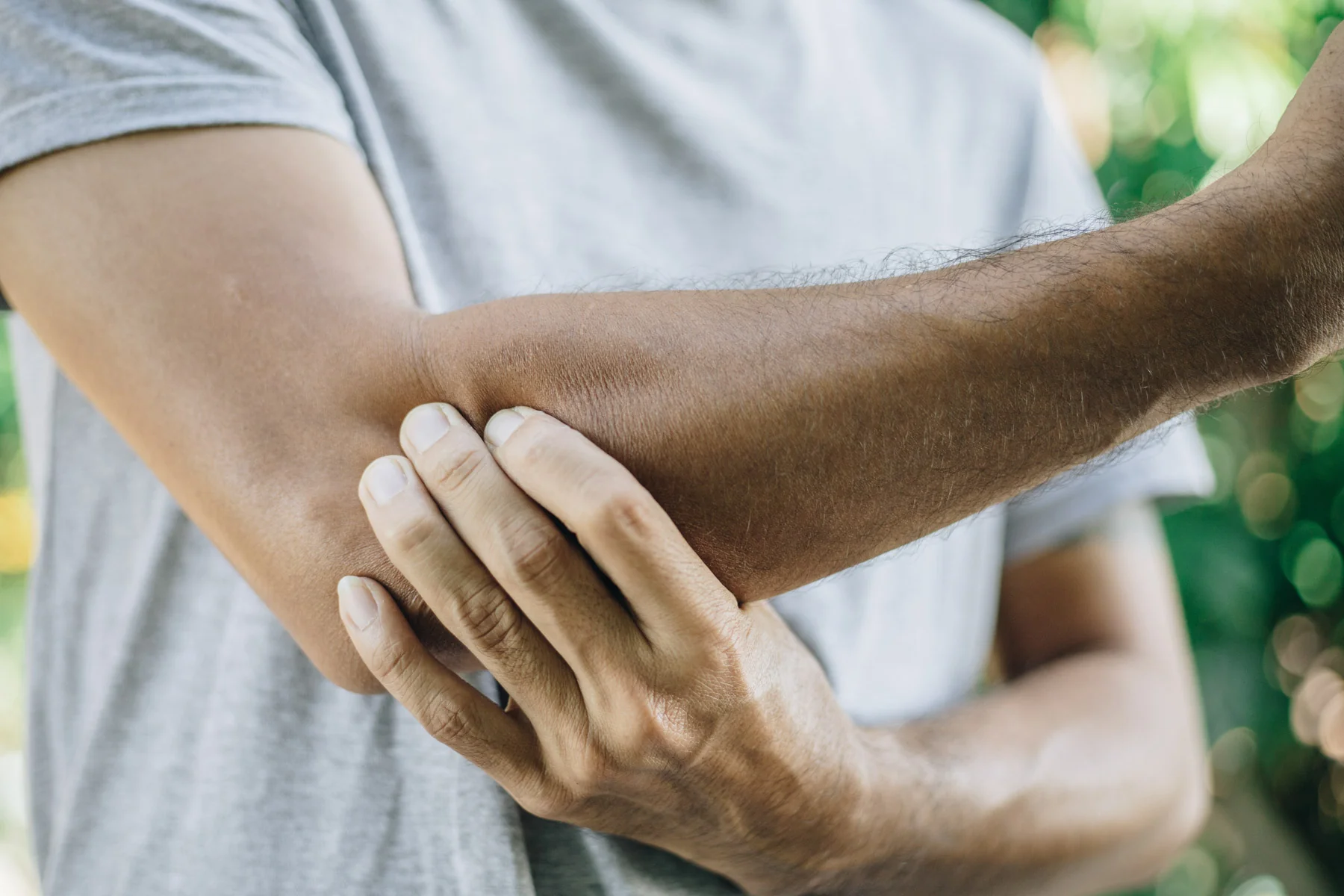
Tennis elbow, also known medically as lateral epicondylitis, is a condition characterized by pain in the outer elbow and forearm. This condition is commonly seen in people who engage in activities that involve repetitive motions of the wrist and arm, which put strain on the tendons that connect to the lateral epicondyle (the bony bump on the outer elbow). Though it is termed “tennis elbow,” it can occur in people who have never played tennis. Here is everything you need to know about tennis elbow:
Symptoms
Pain and tenderness: Usually centered around the outer elbow, which might radiate into the forearm.
Stiffness: The elbow might feel stiff, and making a fist might be painful.
Weakness: You might experience weakness in the hand and wrist.
Grip difficulties: Holding onto objects, especially with a stretched arm, might be difficult.
Causes
Overuse: Engaging in repetitive activities that strain the muscles and tendons in the forearm.
Sports: Activities like tennis, wherein the same motion is frequently repeated, can lead to this condition.
Occupational factors: Jobs that involve repetitive motion, like painting, typing, or using a screwdriver, can lead to tennis elbow.
Risk Factors
Age: Though it can occur at any age, it is more common in adults aged 30 to 50 years.
Activities: Engaging in activities or occupations that involve repetitive motions of the wrist and arm.
Diagnosis
Physical examination: A doctor may diagnose tennis elbow through a physical examination which might include applying pressure to the affected area or asking you to move your elbow, wrist, and fingers in various ways.
Imaging tests: In some cases, X-rays or MRI might be recommended to rule out other conditions.
Treatment
Rest: Taking a break from activities that exacerbate the symptoms is often the first step in treatment.
Physical therapy: Physical therapy exercises can be helpful in strengthening the muscles and improving mobility.
Medications: Over-the-counter pain relievers, such as ibuprofen or naproxen, might be recommended to alleviate pain and reduce inflammation.
Braces or splints: Sometimes, a brace might be used to take the pressure off the tendons.
Injections: In severe cases, steroid injections might be recommended to reduce inflammation.
Surgery: If conservative treatments are not successful, surgery might be an option to repair the damaged tendons.
Prevention
Proper technique: Using the correct technique while engaging in sports or other repetitive activities can help prevent tennis elbow.
Stretches and strengthening: Regular exercises to strengthen the muscles of the forearm can be beneficial.
Equipment: Using the right equipment, like racquets with a larger grip or tools with padded handles, can help reduce the strain on your tendons and muscles.
Ergonomics: Ensuring a proper ergonomic setup while working can prevent the onset of symptoms.
Recovery
Recovery time can vary depending on the severity of the condition. With proper treatment and rest, many individuals recover in a few months, although some cases can take longer. It’s essential to avoid activities that can worsen the condition to facilitate a faster recovery.
In addition to medical interventions, it’s advisable to gradually return to activities and to pay attention to any signs of strain to avoid re-injury.
How Massage can help tennis elbow?
Massage therapy can potentially be a beneficial approach to managing and treating tennis elbow (lateral epicondylitis). The massage can work by targeting the muscles and tendons that have been overused, strained, or injured, promoting healing and easing symptoms. Here’s how massage can help tennis elbow:
1. Reducing Pain
Decreased Inflammation: By improving circulation to the affected area, massage can help reduce inflammation which is often a source of pain.
Endorphin Release: Massage therapy can facilitate the release of endorphins, the body’s natural pain relievers.
2. Promoting Healing
Improved Circulation: Massaging the area can enhance blood circulation, which brings nutrients and oxygen to the injured tissues, fostering quicker healing.
Lymphatic Drainage: Massage can facilitate lymphatic drainage, helping to remove waste products and reduce swelling.
3. Enhancing Flexibility and Range of Motion
Softening Scar Tissue: Chronic cases of tennis elbow can result in the formation of scar tissue. Massage therapy can help soften and break down this scar tissue, improving mobility.
Muscle Relaxation: Massage can help relax tight muscles, facilitating a better range of motion in the elbow and forearm.
4. Decreasing Muscle Stiffness and Spasms
Myofascial Release: Techniques such as myofascial release can be used to alleviate muscle stiffness and prevent spasms by working on the fascia that surrounds the muscles.
5. Preventing Recurrence
Strengthening Surrounding Muscles: Regular massage therapy can aid in strengthening the muscles surrounding the elbow, potentially helping to prevent future injuries.
Education on Self-Massage Techniques: A massage therapist can teach individuals self-massage techniques to maintain the benefits of therapy and prevent recurrence.
6. Emotional Benefits
Stress Reduction: Beyond the physical benefits, massage therapy can help reduce stress and promote relaxation, which can indirectly benefit the healing process.
Specific Massage Techniques for Tennis Elbow
Different massage techniques might be used depending on the individual’s condition, including but not limited to:
Deep Tissue Massage: Targeting the deeper layers of muscles and fascia to relieve tension and pain.
Trigger Point Therapy: Focusing on specific tender points in the muscles that are causing pain and dysfunction.
Friction Therapy: Using targeted friction techniques to break down adhesions and scar tissue.
Swedish Massage: While it is generally gentler, it can still aid in relaxation and increase blood flow to the affected area.
Consulting a Healthcare Provider
Before undergoing massage therapy, it’s recommended to consult with a healthcare provider to ensure that it’s an appropriate treatment option for your condition.
Collaborative Treatment
Massage therapy can be a part of a collaborative treatment plan which might include physical therapy, medications, and in some cases, surgery.
It’s important to find a certified massage therapist with experience in treating tennis elbow to get the most benefit and avoid further injury. It is also critical to communicate clearly with your therapist about your pain levels and any concerns you may have during treatment.